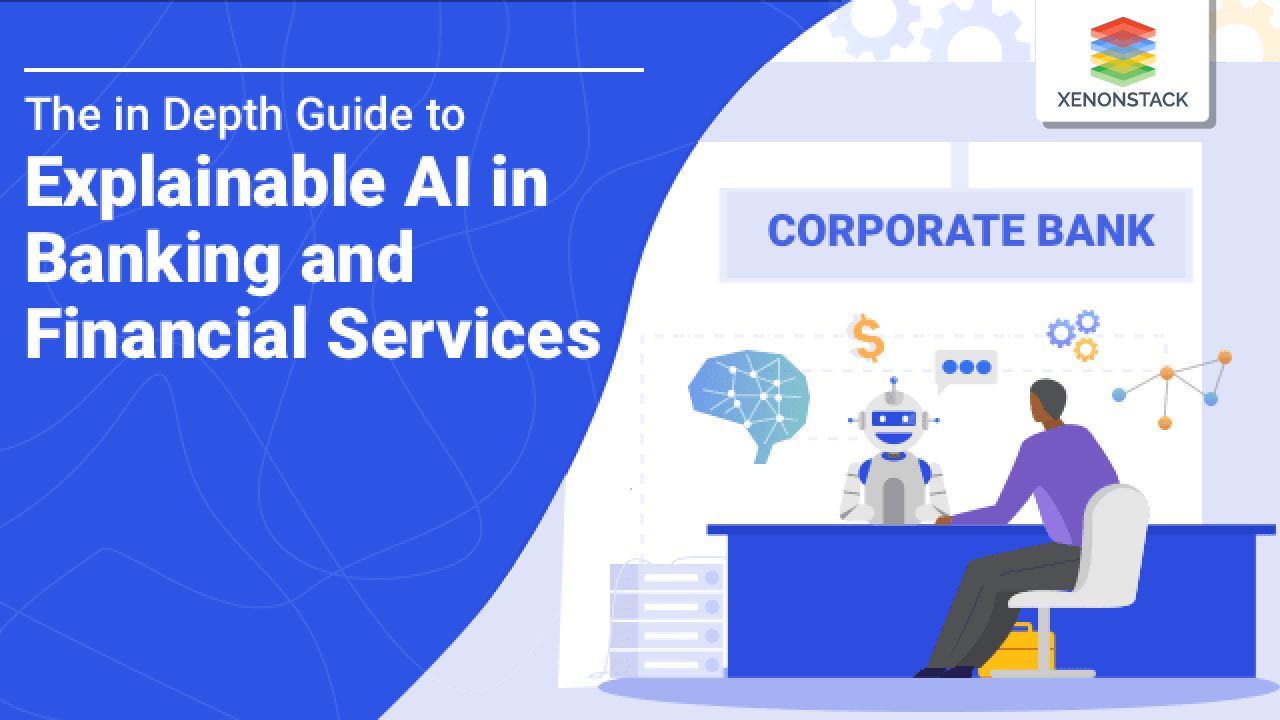
Introduction to Explainable AI in Finance and Banking Industry
The Bank and Finance industry use AI (Artificial Intelligence) to make their task more efficient, reliable, productive, and fast. Several use cases such as anti-money laundering, fraud detection, credit risk scoring, anomaly detection, and churn prediction use AI.
But lack of transparency and governance inhibit AI's adoption because most of these AI and ML (Machine Learning) models have black-box nature. In the case of the finance industry, explanation and governance are must in its AI systems to explain the results that come from an algorithm.
For instance, “Apple card,” the AI system of Apple, is biased against gender. It was offering significantly different interest rates and credit limits to different genders. It is giving large credit limits to men as compared to women. With traditional “black box” AI systems, it would be challenging for a bank to analyze and understand where this bias originated.
Artificial intelligence is helping banks become more efficient in the process of detecting fraud and Robotic Process Automation. Taken From Article, Applications of AI in Banking and its Benefits
Modern methods build engines that are more responsible, transparent, and auditable. With XAI, this becomes much easier to track the bias. Implementing Explainable AI can solve increasing regulatory demands and enable fairness audits on various dimensions, including race, gender, and income. Explainability tells how AI systems reach outcomes and how the rationale for these outcomes can be explained. Better explainability of models helps to overcome issues of ‘black box.’
What type of Explainable AI is required in the Bank and Finance Industry?
Explainable AI in the Banks and Finance industry is not just about giving justification for a model's decision. It explains each element of the solution process.
- Data: It explains the features which are used in the finance Industry, their correlation, and EDA (Exploratory Data Analysis) to understand the hidden data patterns behind the data. It illustrates how the data is to be used for the AI system.
- Algorithm: It illustrates the system's algorithm and how it is beneficial for predicting in the Finance Industry.
- Model: Akira AI gives a brief explanation of model performance and working in the user-friendly manner.
- Output: Justifies the final result, such as the reason behind rejection or acceptance of the claim.
What are the Principles of Explainable AI?
Explainable AI provided by Akira AI obeys the following principles. These are listed below in brief:
Explanation
According to this principle, the System will provide a reason for each decision. Such as in the case of Loan approval AI systems, if the system denies the loan application of a customer, then it is evident that the user will ask why the system denies his/her application and how he/she can improve their application. Users can also query whether the outcome that is generated by the System is correct or not. Therefore, the System will focus on the three central questions: these three factors help create the output.
- What algorithm is being used?
- How does the model work?
- Which inputs or parameters of the data are taking part in determining an output?
These questions help to understand whether the System is working correctly or not. So they can make decisions whether they will use that System or not. They can also give the reason for the output.
Meaningful
The explanation that the system provides should be meaningful. Information will be understandable by the targeted user. According to their prior knowledge and experience, the System offers different explanations for different user groups, such as the end-user and the developers. If a user can understand the information, it means it is meaningful.
Explanation Accuracy
This principle states that explanations should be accurate. Our System explains the same procedure the AI system used to generate output. Because if it generates the wrong output, it is of no use. False justification can lose a customer's trust and reduce revenue by taking wrong decisions and actions.
Knowledge Limits
Knowledge limits prevent the system from giving an unjust and fallacious result. Hence users can assure that the system will never mislead.
Explainable AI can solve increasing regulatory demands and enable fairness audits on various dimensions, including race, gender, and income. Taken From Article, Explainable AI in Finance and Banking Industry
How can Explainable AI be implemented in the Finance and Banking Industry?
Onboarding Process: Financial institutions lose millions of dollars due to insufficient customer onboarding processes. It becomes difficult for many banks to evaluate their health by applying for the loan. Explainable AI provides a system for eligibility check and risk management while maintaining transparency.
Credit Decisioning: To predict the customer's financial institution's creditworthiness, they are now using their indeed Machine Learning models using structured or unstructured data to get better accuracy and efficiency. The demand for explainability for the fair and governable AI framework increases due to increasing biased AI systems such as on a gender or race basis. Akira AI ensures that systems continue to perform as they were intended to, with inbuilt functionality for governance, auditability, and maintenance.
Risk Management: Using the historical structure and unstructured data, AI helps the banks and financial institutions track fraud and signs of potential malfeasance in advance. AI system provides an automated risk management system to manage the risk and maintain the better customer experience.
Forecasting: Explainable AI forecasts the key insights to track the banks' performance. Akira AI provides accurate, dynamic, and automated predictions. Hence helps to make better decisions for Supply Chain Management and customer churn.
Crime Management: An increase in money laundering and fraud increases the banks' pressure. To fight against these crimes, AI provides insights to track and detect suspicious activities. It helps to spot them and prevent these activities from happening.
Cash Management: AI improves the cash management of banks by predicting loan demand, payment speed, ATM requirements. Banks are using historical data of cash to build models that predict cash availability. These insights enable banks to have the right amount of cash on hand where and when anyone needs it.
When do we need Explainable AI in Finance?
It is not compulsory to provide Explanations for all AI systems. Sometimes, AI systems contain some confidential information in data, so it is not required to explain it. It is must to first decide whether the explanation is needed or not in the system. It is required when fairness is critical. Humans must explain so that people cannot hide behind Machine Learning Models.
- When Consequences are Radical: Explanation is required when predictions can greatly influence many other things, e.g., approving a loan by analyzing the risk of default.
- When a New/Unknown Hypothesis is Drawn: Such a person applying for a loan has a higher risk of default, but still, the system approves the loan.
- Compliance: As a Right to Explanation.
A hypothesis and set of general prescribed procedures that separate the divisions, or storehouses, between the conventional IT arms of activities. Taken From Article, FinDevOps - Merging Financial Services with DevOps
Conclusion
Customers worry about adopting AI due to the lack of governance and the unintended consequences. The sophisticated AI and machine learning can be a black box, but modern methods allow us to build responsible, transparent, and auditable systems. For financial institutions, governance and explainability are more pertinent as it becomes necessary to explain the procedure. Akira AI provides AI governance frameworks, and Responsible AI can solve increasing regulatory demands and enable fairness on race, gender, and income.
- Know here about Credit Fraud Detection with Deep Learning
- Read more about Explainable AI in Auto Insurance Claim Prediction.


